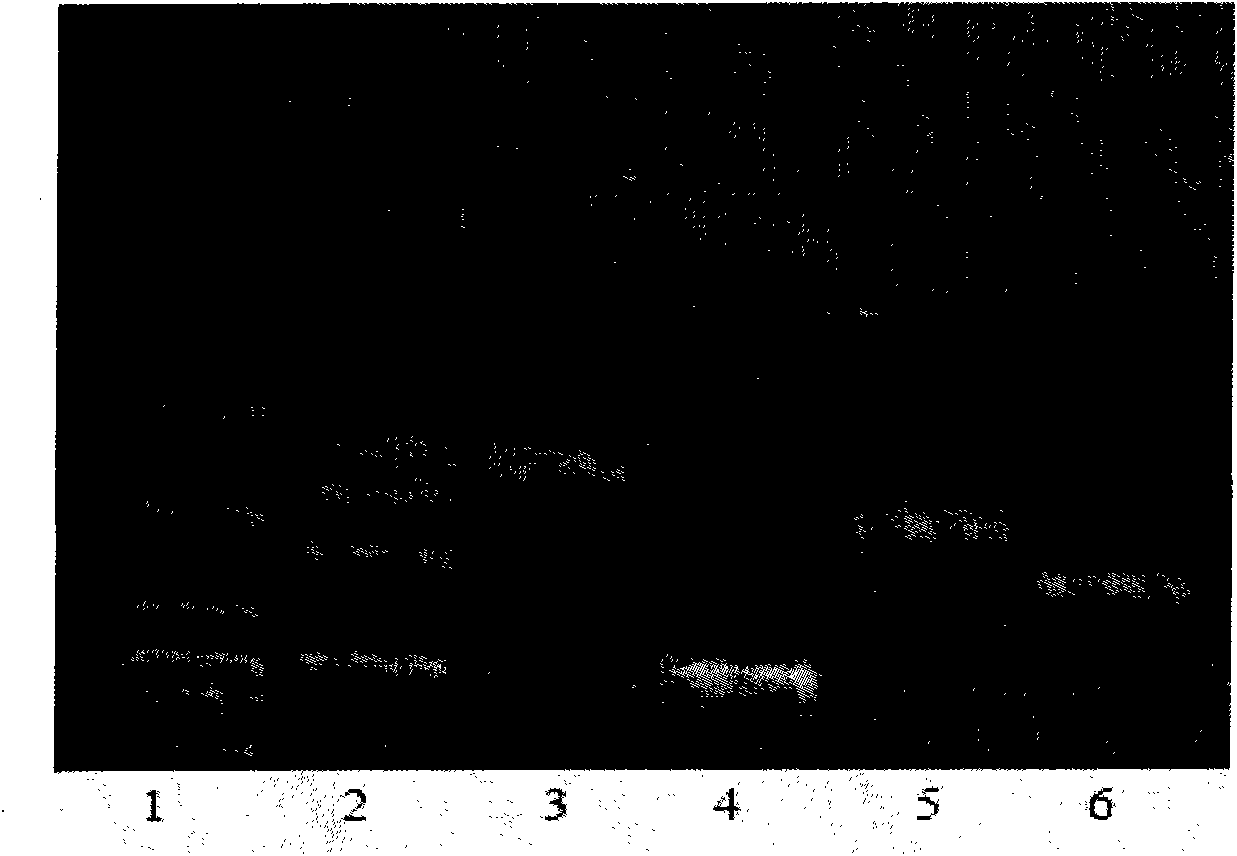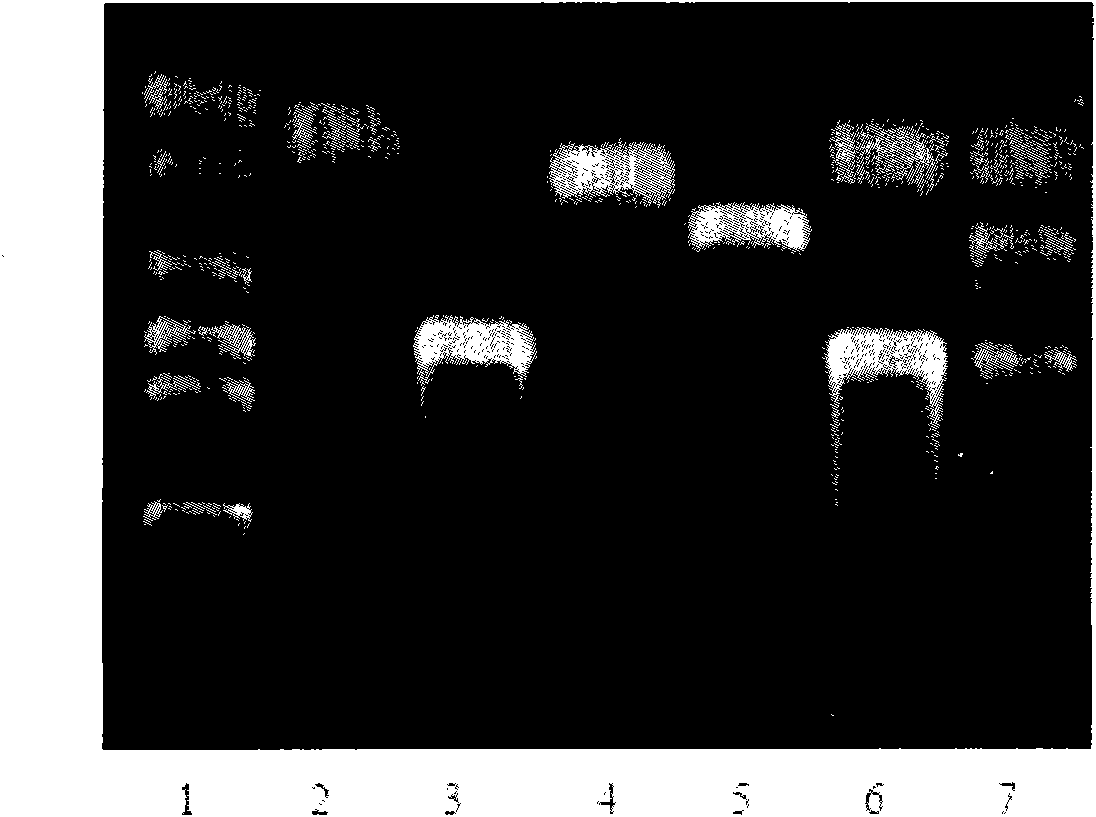Primer group and kit for detecting origin of meat in food with multiple PCR (Polymerase Chain Reaction)
A primer set and food technology, applied in the field of biological genetic engineering, can solve the problems of long time, poor meat source stability, protein variability, etc., and achieve the effect of improving the efficiency of detection and shortening the time of detection
- Summary
- Abstract
- Description
- Claims
- Application Information
AI Technical Summary
Problems solved by technology
Method used
Image
Examples
Embodiment 1
[0016] The invention is for the detection of the meat source in the food, and the product lengths amplified by the PCR reaction are pig: 136bp, cow: 705bp, sheep: 199bp, chicken: 327bp.
[0017] 1. Extraction of DNA from meat products
[0018] Sample processing: Tissue samples of porcine, cattle, sheep and chicken of equal quality were ground and fully ground for later use.
[0019] Extraction of total DNA: take 30mg sample and suspend in 200μl TE, add 400μl lysate (5mol / L CuSCN; 0.05mol / L Tris-HCl, pH6.4; 0.02mol / L EDTA, pH8.0; 1.3% TritonX-100 ), incubate at 70°C for 10 minutes, add an equal amount of chloroform to mix, centrifuge (10000r / min, 5min), take the upper aqueous phase, add an equal amount of ice ethanol to precipitate at -20°C for 10 minutes, centrifuge (10000r / min, 5min), Discard the supernatant, wash once with 70% ethanol, dry in the air, and dissolve the precipitate with 50 μl TE; store at -20°C until use.
[0020] 2. Screening and verification of primers
...
Embodiment 2
[0049] A kit for detecting meat origin in food by multiplex PCR, the kit includes a primer set, a PCR tube and 2×TaqPCR reaction mixed reagents, the primer set consists of a pair of primers for detecting pork, a pair of primers for detecting chicken, and a pair of primers for detecting beef pair and detection of mutton primer pair, the upstream and downstream primers of the pork primer pair are respectively the nucleotide sequences shown in SEQ ID NO.1 and SEQ ID NO.2 in the sequence table, and the upper and lower primers of the detection chicken primer pair The downstream primers are respectively the nucleotide sequences shown in SEQ ID NO.3 and SEQ ID NO.4 in the sequence listing, and the upstream and downstream primers of the beef primer pair are respectively SEQ ID NO.5 and SEQ ID NO.6 in the sequence listing. As shown in the nucleotide sequence, the upstream and downstream primers of the detection mutton primer pair are respectively the nucleotide sequences shown in SEQ ID...
Embodiment 3
[0051] Application of a kit for multiplex PCR detection of meat sources in food:
[0052] Sample DNA extraction, PCR and electrophoresis methods were the same as in Example 1.
[0053] Apply multiplex PCR to the detection of cooked meat products in the market, purchase various cooked meat products from the market, and record the meat quality types identified by their labels, extract total DNA, perform multiplex PCR reactions, and detect the real components.
PUM
 Login to View More
Login to View More Abstract
Description
Claims
Application Information
 Login to View More
Login to View More - R&D
- Intellectual Property
- Life Sciences
- Materials
- Tech Scout
- Unparalleled Data Quality
- Higher Quality Content
- 60% Fewer Hallucinations
Browse by: Latest US Patents, China's latest patents, Technical Efficacy Thesaurus, Application Domain, Technology Topic, Popular Technical Reports.
© 2025 PatSnap. All rights reserved.Legal|Privacy policy|Modern Slavery Act Transparency Statement|Sitemap|About US| Contact US: help@patsnap.com



